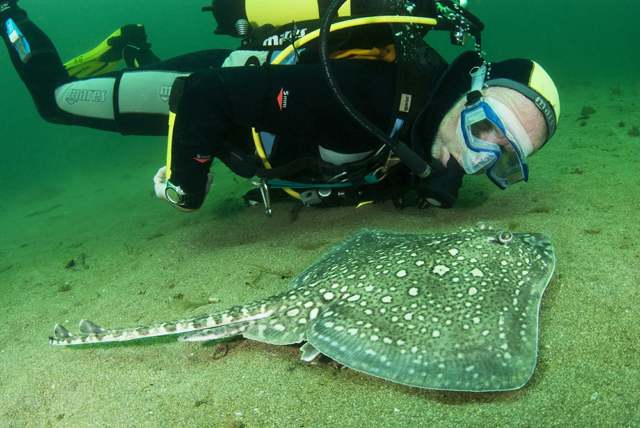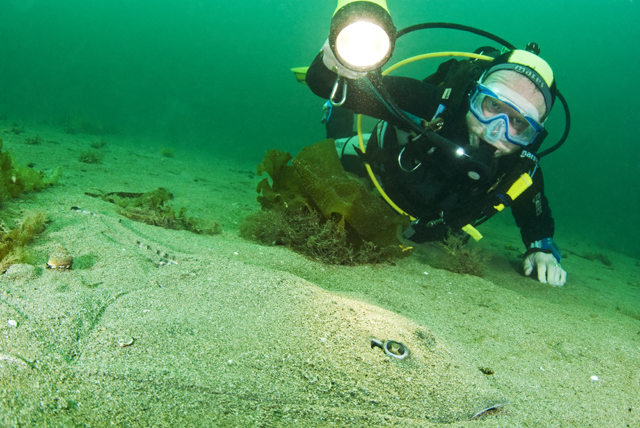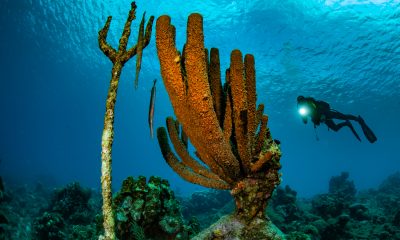News
Have a Ray Day
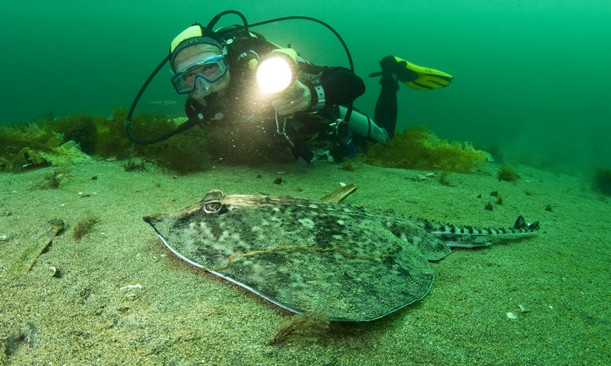
Mike Anselmi, the owner of Porthkerris Dive Centre in Cornwall, said that the Helford River Estuary is one of the most popular dive sites in the area. The shallow seabed attracts all sorts of interesting marine life including Sea Hares, Cuttlefish, Clams, Scallops, Hermits and Blonde Rays. May through to August is peak season for Thornback Ray (Raja clavata) sightings. Mike said that the Rays congregated in larger numbers around mid-August. During this time it’s not unusual to see at least 5 or 6 different individuals on a single 1 hour long dive. The Rays stick together in loose packs, so when one is sighted there are usually others somewhere close by.
This is a unique underwater experience and gives divers and photographers the perfect opportunity to get up close and personal with these creatures. It’s even possible to swim side by side as they effortlessly ‘fly’ across the seabed. Thornbacks shouldn’t be confused with their close relatives, Sting Rays. They are totally non-aggressive and pose no threat to divers. There are no lethal looking barbs protruding from the tail. Instead they have 30-50 spines along the tail and up the back which could potentially give someone a graze but only if the Ray is grabbed or picked up. The mouth is located on the white coloured underside. This has rows of very small teeth which make perfect tools for crunching on Crabs, Prawns and Flatfish – not divers.
The Charter Boat
Mike has been running the family business for more than 22 years. He owns 2 hard boats and a twin engined RIB. We went out on Mike’s flagship, the 14 metre long Celtic Cat. Getting onto the boat is quite a novel experience. There is no jetty, so divers have to walk along a high rise gangplank which is then pushed into the sea by a Tractor. Mike’s other hard boat, the smaller 8 metre long Celtic Kitten, has a bow ramp so it can come right up to the beach. Celtic Cat has plenty of room onboard for kitting up and gear stowage. The boat also has a big enclosed cabin area and an inner sanctum where I could get hot drinks. Mike has fitted a double diver lift on the stern which is controlled by CCTV linked to the high rise Bridge. Mike normally offers the Thornback Ray dive as and when he’s asked. He said that the Rays come closer inshore during calm weather; they don’t like choppy seas.
Arrival at the site
Porthkerris Dive Centre is located way down on the South West Coast of Cornwall near the Lizard. RNAS Culdrose is a good landmark to aim for and then follow the signs to St Keverne. The last few miles can be quite confusing (I took the wrong turning, duh!) but there’s still a mobile signal for any ‘help, I’m lost’ SOS calls to the dive centre. When I started seeing the Basking Shark (this is the other big attraction) signs I knew I was on the right track. The narrow hedge-lined lanes eventually open out onto a very picturesque little bay. The new dive centre building is located right next to the pebble beach. On-site facilities include a dive shop, 2 camp sites, toilets, cafe, car park, gas fills and plenty of shore diving possibilities. There are even a number of Pubs close by. The local Seal sanctuary located at Gweek is also worth a visit during off gassing periods.
Pre-dive briefing
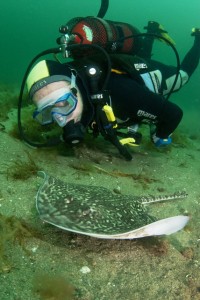
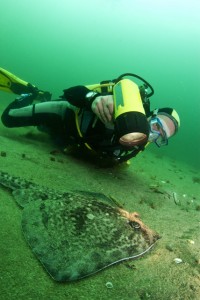 The Helford River is about 20 minute’s boat ride from Porthkerris Dive Centre. At high water it’s around 12 metres deep at the river mouth and 8 metres further up the estuary by the boat moorings. The seabed is made up of sand and shingle in the central channel. Nearer the edges and further up the estuary this changes to a maerl-like composition interspersed with patches of weed (perfect for Scallops).
The Helford River is about 20 minute’s boat ride from Porthkerris Dive Centre. At high water it’s around 12 metres deep at the river mouth and 8 metres further up the estuary by the boat moorings. The seabed is made up of sand and shingle in the central channel. Nearer the edges and further up the estuary this changes to a maerl-like composition interspersed with patches of weed (perfect for Scallops).
There can be strong currents, so it’s best to dive a few hours before high water on the flood tide when things are calming down. The visibility will be better and there is more chance of seeing Thornback Rays. Keep a close eye on air supplies, as chasing after Rays can be quite a tank-draining exercise. All divers should carry a delayed SMB. Mike asks that they are deployed at the end of the dive before commencing any safety stops. This is a busy waterway so be extra vigilant on ascents. Propeller haircuts are not advisable.
Mike dropped us in the middle of the channel right by the River mouth. The tide was still flooding which meant that the current would take us inside the channel rather than out to sea. We would also have ‘cleaner’ water for my photographs. We made a free descent without reference to the seabed. The Rays are not in any particular area so there is no set direction to take, it’s basically pot luck. We drifted along with the current scanning the seabed for any Ray like shapes.
The Dive
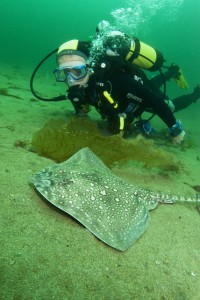 Creeping up on Thornback Rays turned out to be easier than I expected. I had brought along Brian Hayes, a diving friend of many years, to act as ‘model’ and Ray spotter. We found our first Ray in the first 2-3 minutes of our dive. I could make out the diamond shaped outline hidden under the sand. A pair of eye stalks and a sharp pointy nose were the only parts visible. I guess this was in readiness to strike at any prey that unwittingly wandered into the kill zone.
Creeping up on Thornback Rays turned out to be easier than I expected. I had brought along Brian Hayes, a diving friend of many years, to act as ‘model’ and Ray spotter. We found our first Ray in the first 2-3 minutes of our dive. I could make out the diamond shaped outline hidden under the sand. A pair of eye stalks and a sharp pointy nose were the only parts visible. I guess this was in readiness to strike at any prey that unwittingly wandered into the kill zone.
Working as a team we managed to get within touching distance of around 5 or 6 different Rays on each dive. The Rays seemed to react differently depending on the tide conditions. While the tide was still flooding they were more active and on the move. Mike thinks this is when they are feeding. On 3 occasions we had to swim like lunatics just to keep up. When there was very little tide we found 2 or 3 different Rays buried in the sand and they were very easy to approach – in fact, I could have touched them with my camera dome and they still wouldn’t have budged. I even got Brian to do a ‘Steve Irwin’ manoeuvre over the top of a Ray for a close-up head shot and there was still no reaction. Maybe the Ray thought that its camouflage was so good we couldn’t see it.
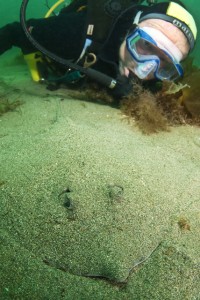 As the tide turned there seemed to be less Rays about and they were moving much more slowly. We had also moved up the estuary nearer to the boat moorings. The seabed composition had changed and there were far more Sea Hares around. We swam along with one particular Ray for a good 5 minutes and then bumped into a very photogenic Cuttlefish. None of the Rays shot off in an erratic manner or seemed distressed by our presence. Considering they were being sandwiched by 2 divers this was quite surprising.
As the tide turned there seemed to be less Rays about and they were moving much more slowly. We had also moved up the estuary nearer to the boat moorings. The seabed composition had changed and there were far more Sea Hares around. We swam along with one particular Ray for a good 5 minutes and then bumped into a very photogenic Cuttlefish. None of the Rays shot off in an erratic manner or seemed distressed by our presence. Considering they were being sandwiched by 2 divers this was quite surprising.
The Thornbacks we encountered varied in size from small 20cm wingspans to much bigger 50cm plus specimens. The colour schemes were usually grey or brown with a kaleidoscope pattern of spots and splodges on the topside. Most had 2 claspers dangling from the tail area meaning they were males. We only encountered one small female. Average recorded sizes are around 60 cm and weigh in at 3 or 4kg’s. They can grow to more than a metre in length and weigh over 15kg’s.
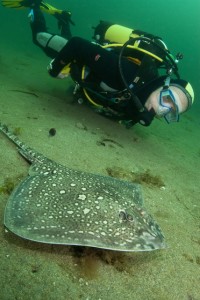 This has to be one of the best marine life dives in the UK and it’s at a shallow depth where every level of diver can safely join in the fun. Our close encounters were totally natural. There was no provocation or feeding enticements going on in the background. They say a picture paints a thousand words so hopefully my photographs show just how close we managed to get. With rather more luck than judgement we had chosen a perfect day for weather. There was plenty of sunlight and very little wave action to worry about. Underwater visibility was around 8 metres throughout and the current took away any kicked up silt during our power finning spurts. For once I actually had to admit this was pretty good going for UK conditions. The toughest part of the day was keeping my model focused on the job in-hand. Brian was getting more and more distracted by the number of decent sized Scallops scattered over the seabed. He even had his goody bag at the ready!
This has to be one of the best marine life dives in the UK and it’s at a shallow depth where every level of diver can safely join in the fun. Our close encounters were totally natural. There was no provocation or feeding enticements going on in the background. They say a picture paints a thousand words so hopefully my photographs show just how close we managed to get. With rather more luck than judgement we had chosen a perfect day for weather. There was plenty of sunlight and very little wave action to worry about. Underwater visibility was around 8 metres throughout and the current took away any kicked up silt during our power finning spurts. For once I actually had to admit this was pretty good going for UK conditions. The toughest part of the day was keeping my model focused on the job in-hand. Brian was getting more and more distracted by the number of decent sized Scallops scattered over the seabed. He even had his goody bag at the ready!
Blogs
TRAVEL BLOG: Jeff Goodman Dives SOMABAY, Part 2

Day three of my trip to Somabay and we were spending the day on the Lady Christina and diving on the wreck of the Salem Express.
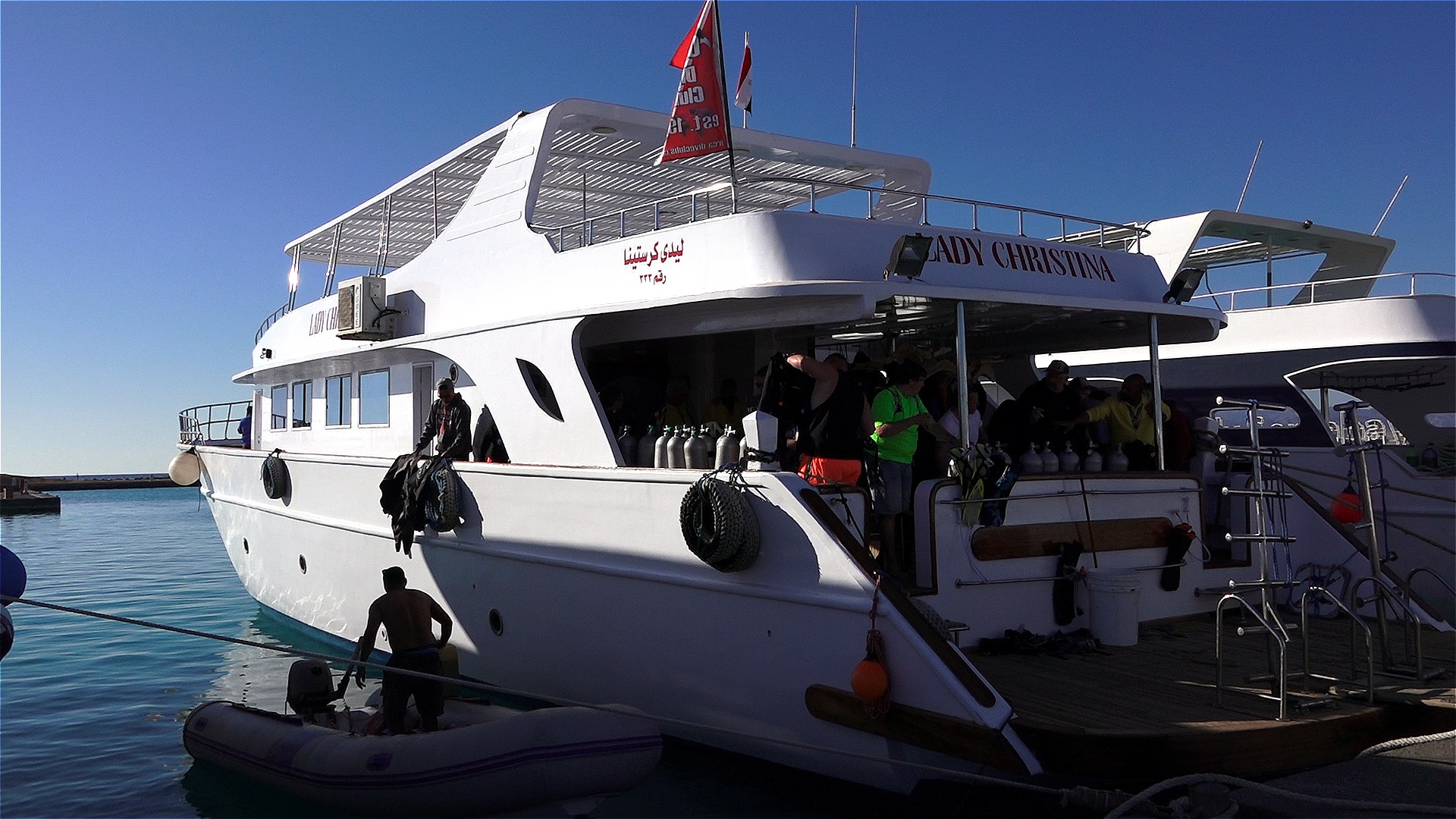
Diving wrecks for me is always one of mixed emotions. The excitement of diving a wreck is more than often tempered by the thought of loss of life when she sank. The Salem Express was a passenger ship and a roll-on/roll-off ferry travelling from Jeddah, Saudi Arabia to Safaga, Egypt. Most passengers were of poor class travelling home from their holidays while around 150 people were returning home from their pilgrimage to Mecca.

The ship struck a reef and sank within 20 minutes. Passengers were trapped below deck and the ship was filled with fear and panic.

The wreck area is strewn with personal belongings from the crew and passengers such as a transistor radio and a flat iron for clothes. A diver at sometime has put them in a prominent place to be seen.

Tragically only one life boat was launched while the others went down with the ship. More than 600 men, women and children lost their lives here.

It’s a stark reminder that the sea can be unforgiving and so when we dive on such wrecks we should do so with humble regard.
Returning to the surface, shoals of fish are gathered under our boat and seem to be welcoming us back into the light.
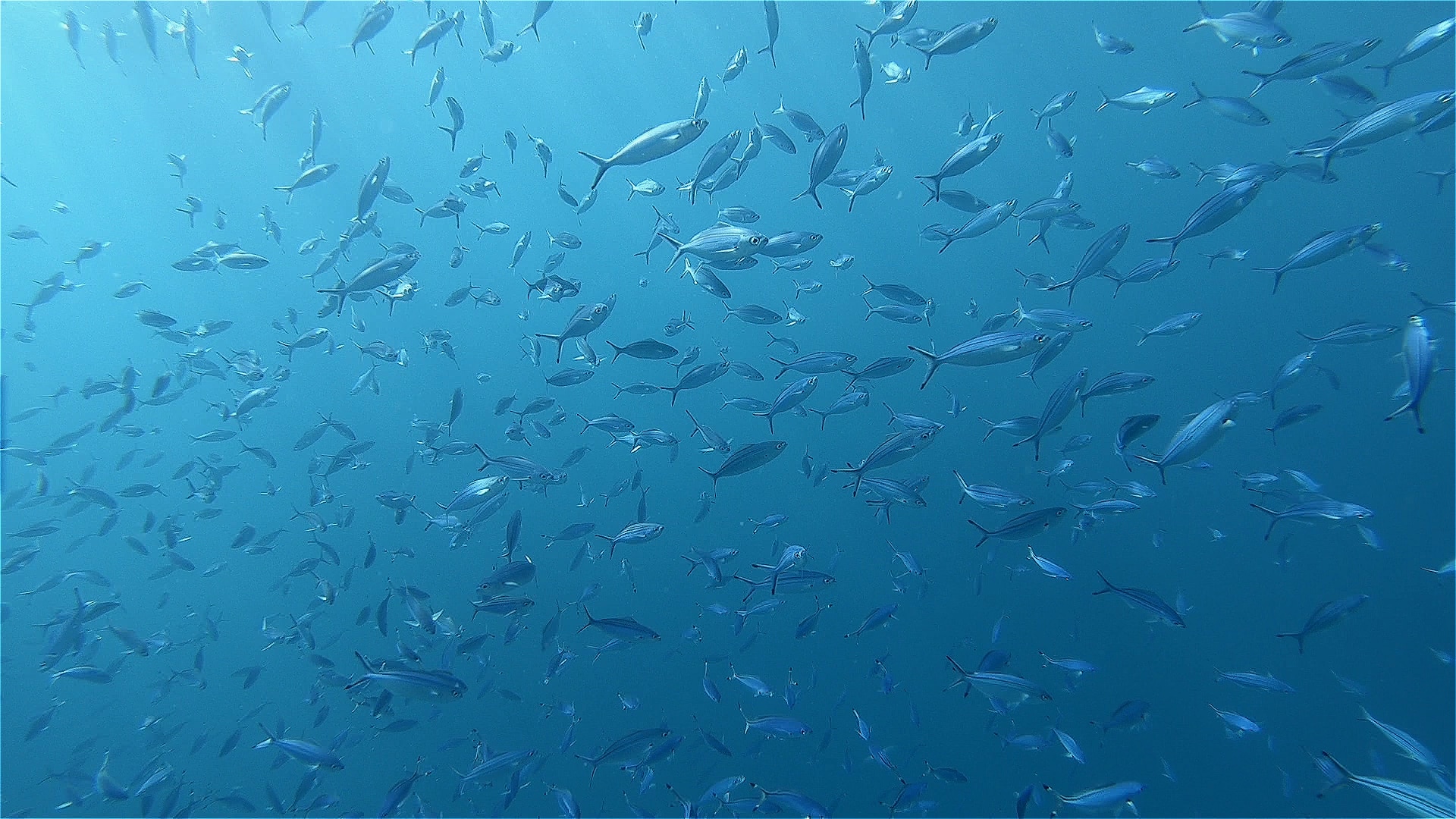
Back at the Breakers I sat in the dining area with a beer and a very good meal while my thoughts still remained with the day’s dive on the Salem Express.
Check in for part 3 tomorrow for Jeff’s last day of diving with Somabay on the off-shore reefs looking for turtles.
Book your next Red Sea dive adventure with SOMABAY! For more information, visit www.somabay.com.
Stay at the Breakers Diving & Surfing Lodge when you visit! For more information, visit www.thebreakers-somabay.com.
Find out more about ORCA Dive Clubs at SOMABAY at www.orca-diveclubs.com/en/soma-bay-en.
Blogs
TRAVEL BLOG: Jeff Goodman Dives SOMABAY, Part 1

For a week at the end of February I was invited to sample the diving with Orca Dive Club based at the Breakers Diving and Surfing Lodge by courtesy of SOMABAY.
Somabay covers an entire peninsula and is home to several resorts as well as residential compounds. Somabay caters for scuba diving as well as many other sports, including windsurfing, golf, sailing, go-carting, horse riding and many other activities.
All the activities are of a world-class standard and any or all of these can be booked directly from The Breakers.
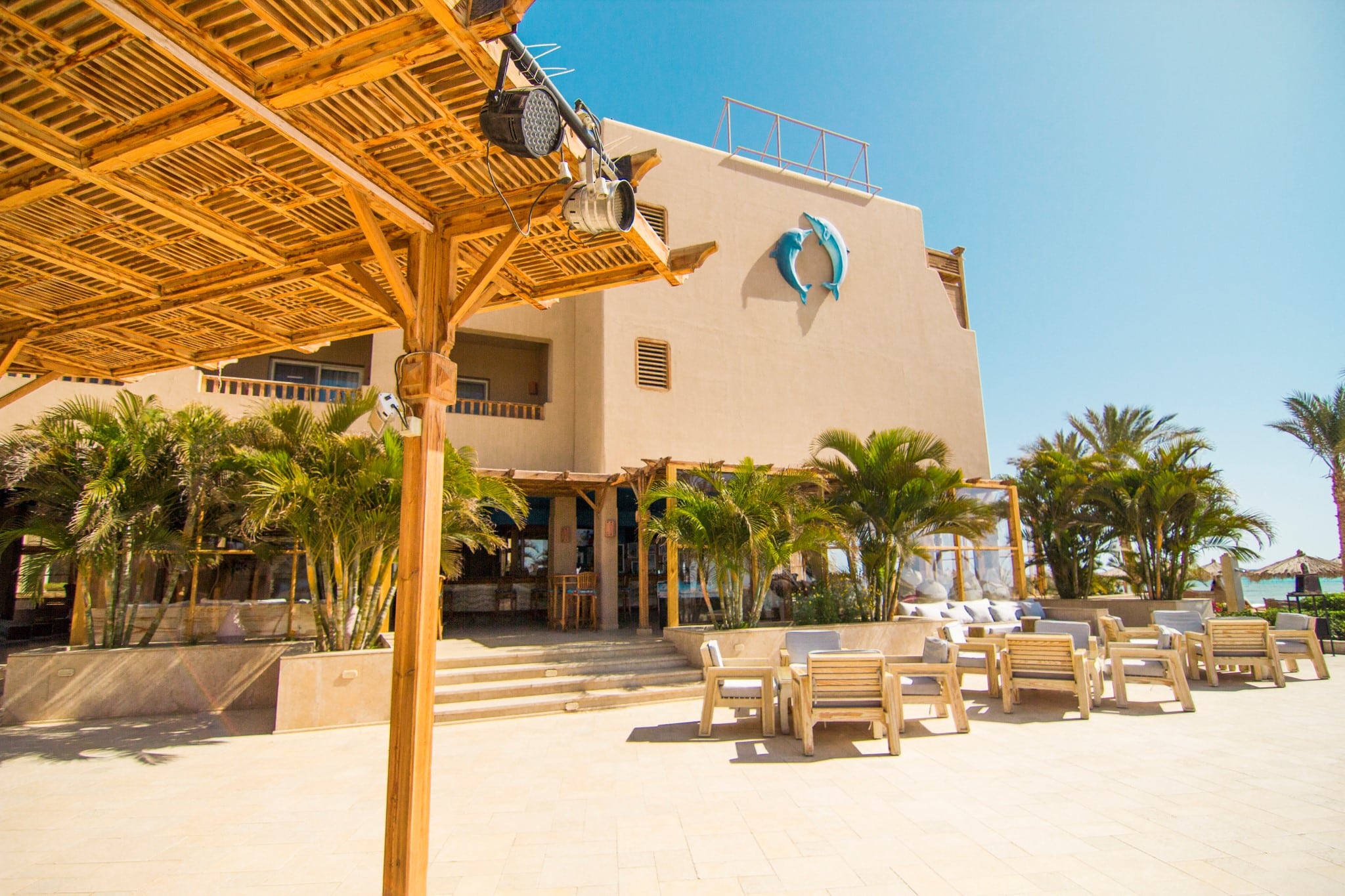
I took Easyjet from Bristol (UK) to Hurghada. Easyjet are not by any means my favourite airline but the flight was cheap and direct (except for the surprise extra £48 I was charged at the gate for my carry-on bag).
I was met at Hurghada airport by a driver and car and taken to the Breakers 28 miles (45Kilomaters) south along the coast. Once at the hotel I was too late for an evening meal and so a basic meal was delivered to my room. That and a beer from the fridge and I was fast asleep.
Early the next morning after breakfast I arrived for my rep meeting at the Orca Dive Center for 8.00am. I was immediately made to feel welcome, and after brief introductions I got some dive gear from the store, had a chat with my dive guide Mohamed and got ready to try the house reef situated at the end of a very long wooded pier where all diving gear and divers are taken out by buggies.
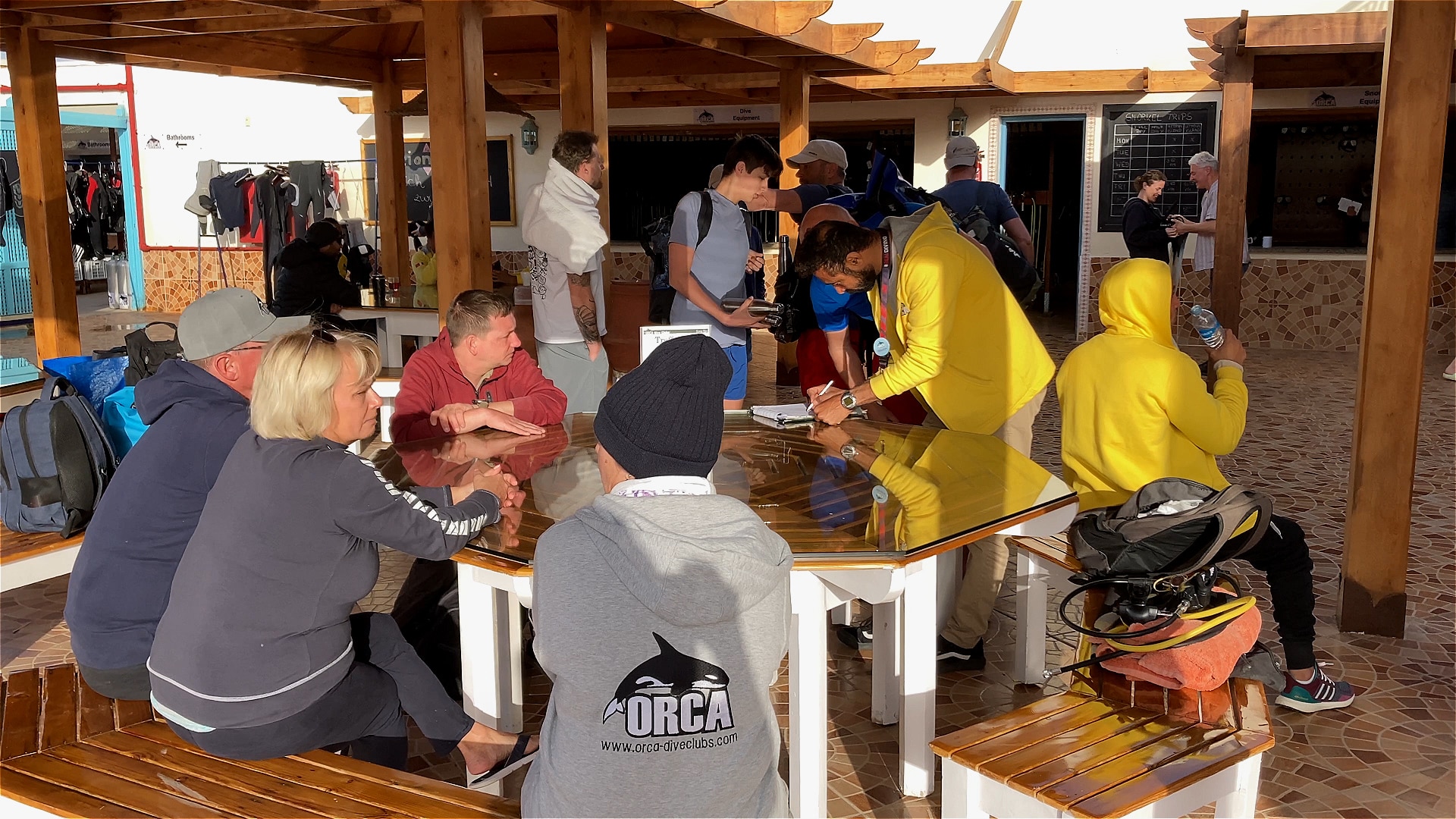
Once at the end of the pier, a helping hand from staff makes sure your gear is set and then it’s a short walk to the very end where you can either climb down a ladder of simply jump in the water next to the reef. The house reef extends both north and south giving a very easy and safe dive with plenty to see. At this time of the year the water temperature was a constant 22 degrees Centigrade and there was little or no current, so there were no issues in swimming back to the pier.
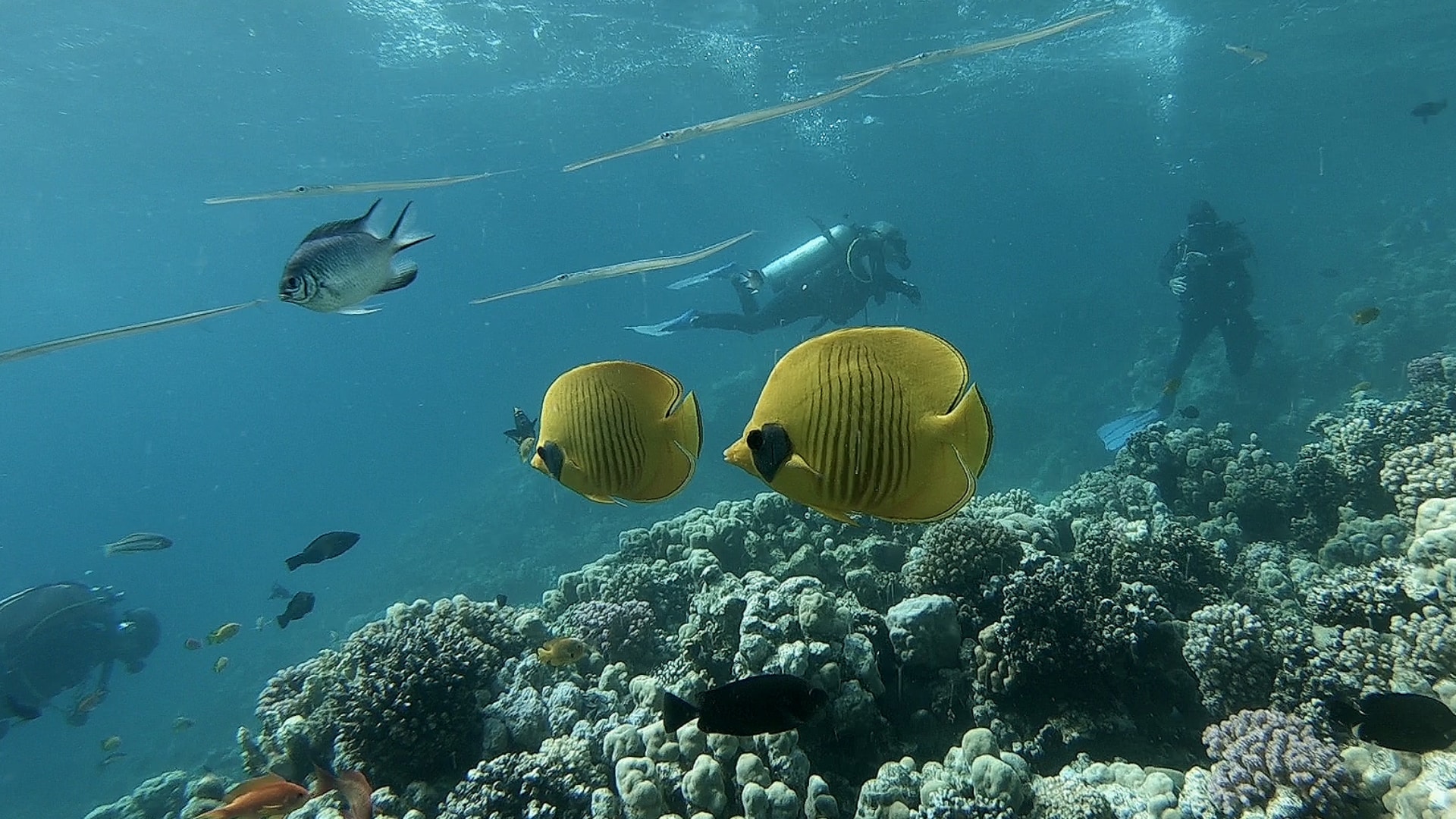
Quite a few divers were in dry or semi-dry suits, but being from the UK and used to the cold I found a 3mm wetsuit with a 3mm neoprene vest quite comfortable. Even after 50 years of diving I still find that first dive of a trip slightly nerving until I am actually underwater and then all becomes relaxed and I ease into auto diving mode. There was plenty to see with many of the Red Sea favourites along the way.
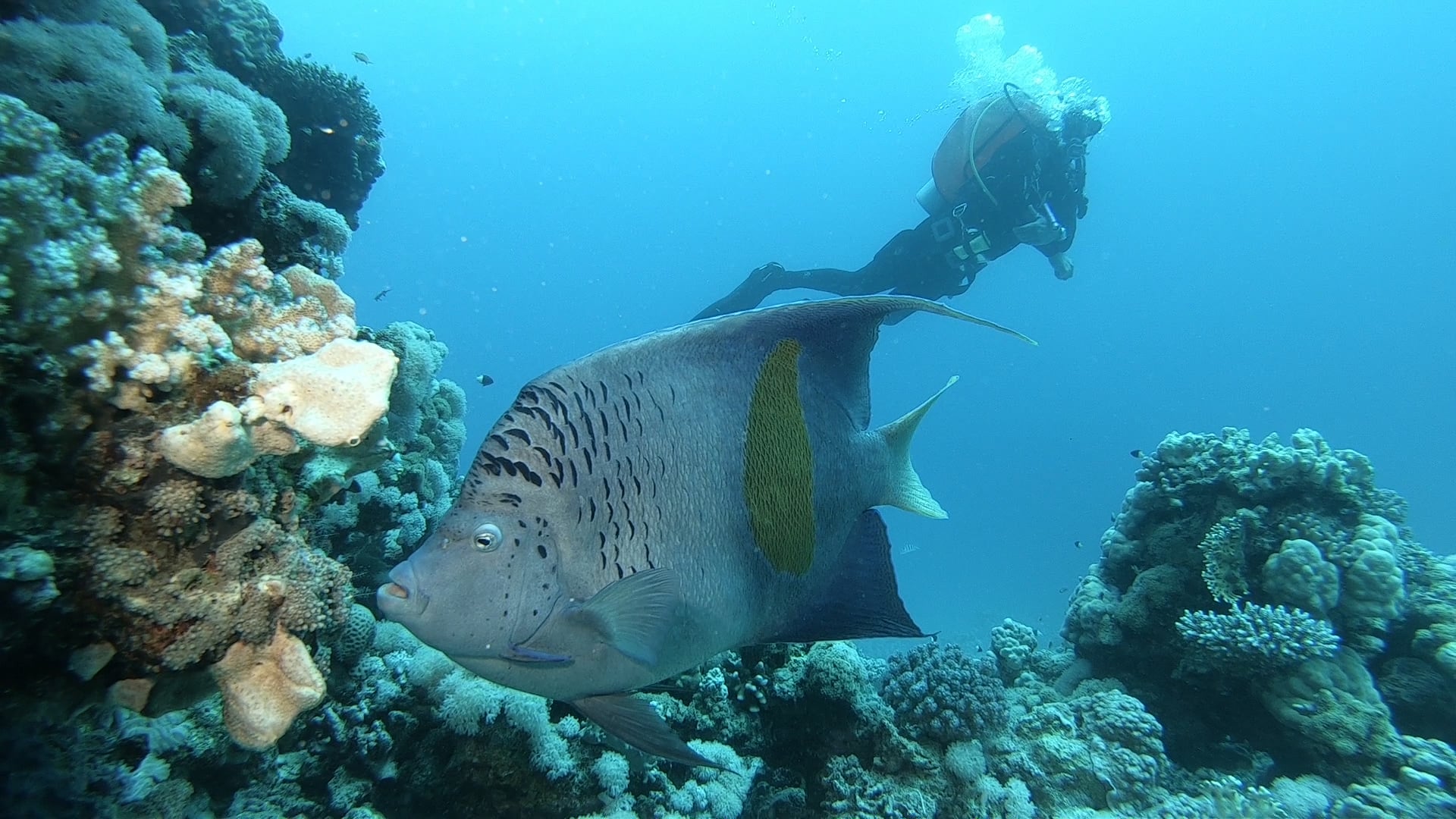
After the dive and a buggy ride back to the hotel for a very good buffet lunch I was back in the water, once again on the house reef for an afternoon dive.
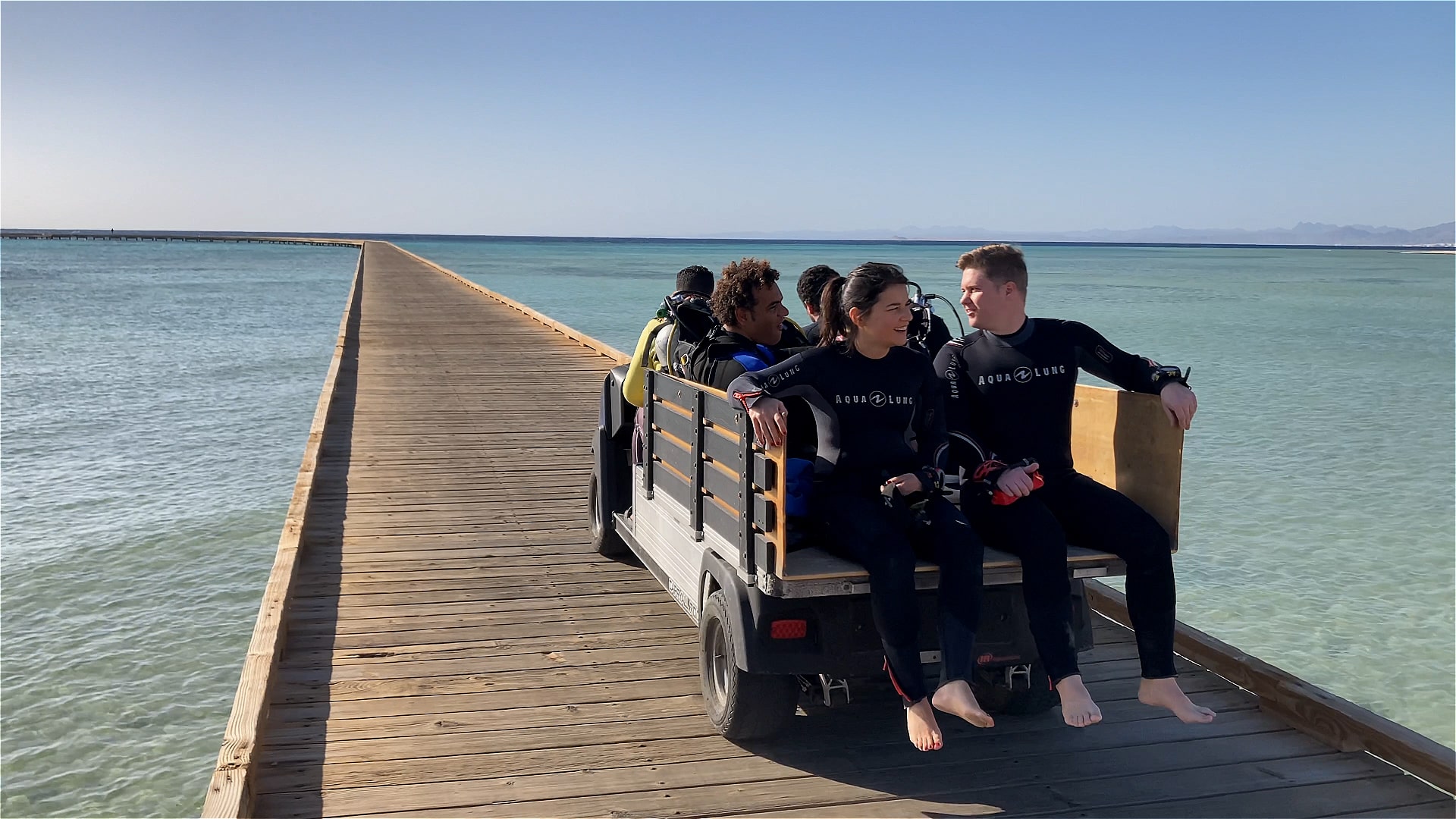
Check in for part 2 tomorrow when Jeff gets on a day boat and dives a few of the off-shore reefs.
Book your next Red Sea dive adventure with SOMABAY! For more information, visit www.somabay.com.
Stay at the Breakers Diving & Surfing Lodge when you visit! For more information, visit www.thebreakers-somabay.com.
Find out more about ORCA Dive Clubs at SOMABAY at www.orca-diveclubs.com/en/soma-bay-en.
-

 News3 months ago
News3 months agoHone your underwater photography skills with Alphamarine Photography at Red Sea Diving Safari in March
-

 News2 months ago
News2 months agoCapturing Critters in Lembeh Underwater Photography Workshop 2024: Event Roundup
-

 Marine Life & Conservation Blogs2 months ago
Marine Life & Conservation Blogs2 months agoCreature Feature: Swell Sharks
-

 Blogs1 month ago
Blogs1 month agoMurex Resorts: Passport to Paradise!
-

 Gear News3 months ago
Gear News3 months agoBare X-Mission Drysuit: Ideal for Both Technical and Recreational Divers
-

 Blogs2 months ago
Blogs2 months agoDiver Discovering Whale Skeletons Beneath Ice Judged World’s Best Underwater Photograph
-

 Gear Reviews2 months ago
Gear Reviews2 months agoGear Review: Oceanic+ Dive Housing for iPhone
-
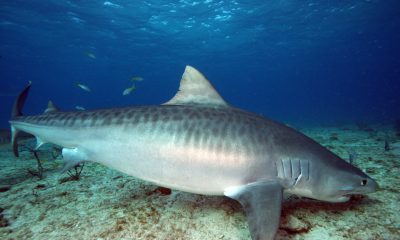
 Blogs3 months ago
Blogs3 months agoThe Thrilling Encounter with Tiger Sharks at Beqa Lagoon’s ‘The Colosseum’ with Coral Coast Divers


